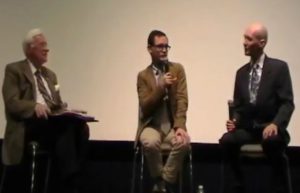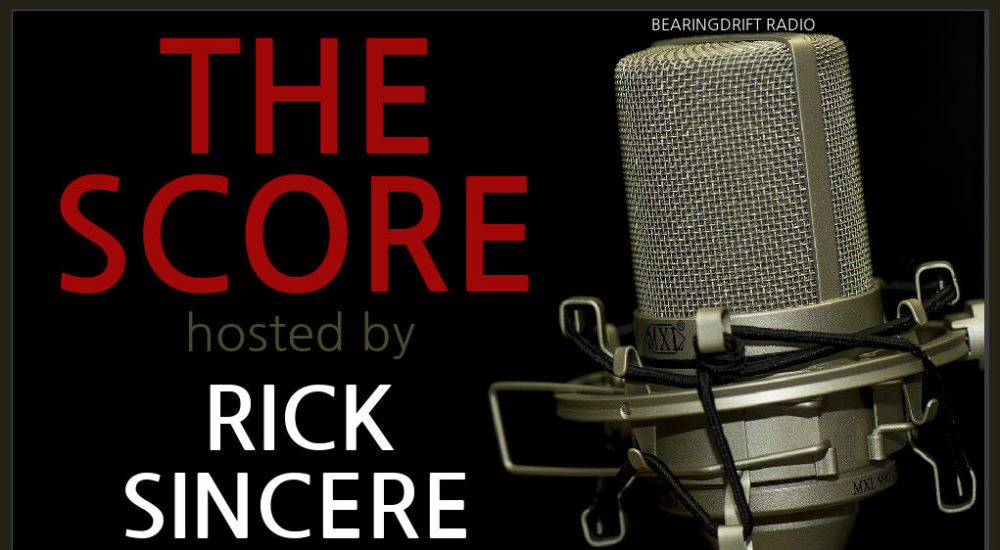The Score: Notre-Dame, Holy Grounds, Mueller Report, Payday Lending
This week on The Score – What have we learned from the Mueller Report? Can the Cathedral of Notre-Dame be restored to its medieval glory? Is there a link between coffee drinking and religious faith? Do payday lending regulations help or hurt the working poor?
The Score took a break last week because I was out of town on business. This week’s episode was delayed because I have been fighting off a cold (which I believe I caught while flying between Richmond and Boston; passenger jets are just metallic tubes filled with germs). In fact, the morning after I recorded the show, I woke up with laryngitis and could barely speak above a whisper. In show business, they say, timing is everything and my laryngeal loss was fortuitously timed.
Notre-Dame Through History
 This past Monday, the world was transfixed by images on TV and on social media as the 850-year-old Cathedral of Notre-Dame in Paris seemed to be engulfed in flames. Parisians gathered across the Seine and from every vantage point to watch and weep, to pray and sing as their national landmark appeared to be doomed. Subsequent photographs showed that the damage was not nearly so extensive as feared: the walls still stood and even the ancient stained-glass windows had not shattered.
This past Monday, the world was transfixed by images on TV and on social media as the 850-year-old Cathedral of Notre-Dame in Paris seemed to be engulfed in flames. Parisians gathered across the Seine and from every vantage point to watch and weep, to pray and sing as their national landmark appeared to be doomed. Subsequent photographs showed that the damage was not nearly so extensive as feared: the walls still stood and even the ancient stained-glass windows had not shattered.
President Emmanuel Macron has pledged to restore the Cathedral within five years and private donors have already promised billions of dollars for the effort.
On Thursday, I spoke by telephone to Lisa Reilly, an architectural historian at the University of Virginia, and asked her about Notre-Dame’s distant past and near future. She pointed out that the design of the cathedral helped keep the fire contained.
In an interview with UVA Today, Reilly reiterated what she told me during our conversation:
At Notre Dame, as with other cathedrals of the time, there is a network of wooden trusses above the stone ceiling, supporting the steeply pitched roof that was designed to move water and snow away from the building through the system of drains and gargoyles.
Those wooden tresses fueled the fire, but the separation of wood and stone vaulting worked as intended, actually. Fire was a huge problem in the Middle Ages, as people relied on it for heat and used oil lamps and candles [as lighting]. Separating the stone covering from the wooden tresses seems quite intentional on the part of the architects, and it largely kept the fire from spreading from the wooden part of the building to the stone part.
Reilly is an associate professor in the School of Architecture at UVA, where she directs the undergraduate program in architectural history. She is co-editor of Skyscraper Gothic: Medieval Style and Modernist Buildings (2017, with Kevin D. Murphy) and author of An Architectural History of Peterborough Cathedral (1997).
In 2015, she was a Fulbright Fellow at the University of York, a city she mentions in our interview because York Minster (the local Anglican cathedral) suffered a fire in 1984 that was comparable to that at Notre-Dame; by the time I visited the church in 1987, much of the damage had been repaired, suggesting that President Macron’s five-year goal is practicable.
Dr. Reilly also recommended this article from CityLab for more background about medieval architecture and the specifics of Notre-Dame’s structure.
Coffee and Faith
 Last week I was in Boston, where I attended the Specialty Coffee Expo, assisting some clients from Africa who were among the exhibitors. More than 14,000 people from around the world were there, showing off their coffee and the tools we use to make it drinkable.
Last week I was in Boston, where I attended the Specialty Coffee Expo, assisting some clients from Africa who were among the exhibitors. More than 14,000 people from around the world were there, showing off their coffee and the tools we use to make it drinkable.
Amid the caffeinated turbulence, I met Tim Schenck, rector of the Episcopal Parish of St. John the Evangelist in Hingham, Massachusetts and author of a new book – just published this month – with the unwieldy but provocative title, Holy Grounds: The Surprising Connection between Coffee and Faith – From Dancing Goats to Satan’s Drink. As he notes in his book (pp. 11-12),
Most Americans don’t associate their abundant coffee-drinking habits with Islam. If pressed to ponder coffee history, we might hearken back to the great coffeehouses of Europe or think about the tropical climates in which much of today’s coffee is grown — Roman Catholic strongholds like Brazil and other places in South and Central America. Many of us might even look to the Boston Tea Party as the reason we all drink coffee. Dump the tea! Stick it to the king! God bless America!
Despite the fact that Americans consume more coffee than any other country in the world, we know precious little about its history, let alone its deep religious roots. In an era of distrust among people of differing religious backgrounds, I love that we have Muslims to thank for discovering coffee. A shared coffee backstory offers an opportunity to see one another, especially those with whom we don’t share a culture, with fresh eyes. Knowing that our common history binds us together and shines light upon our similarities rather than focusing on our differences reveals one of the true gifts of coffee culture.
Father Tim and I talked on the crowded floor of the Boston Convention and Exhibition Center. In addition to Holy Grounds, he also wrote What Size Are God’s Shoes: Kids, Chaos, and the Spiritual Life (2008), Dust Bunnies in the Basket: Finding God in Lent & Easter (2015), and Father Tim’s Church Survival Guide (also 2015), among other books. He is a syndicated columnist and can be found on Twitter at @FatherTim.
Mueller Report in Historical Context
This past Thursday morning, Attorney General Bill Barr released the long-awaited Mueller Report, containing the special counsel’s findings about Russian interference in American politics and alleged obstruction of justice by President Trump. Since then, it’s been difficult to escape reporting on the Report, commentary on the Report, and arguing over the Report in print, broadcast, and social media.
 In order for The Score to join that broad conversation, I spoke by telephone Thursday afternoon with historian Ken Hughes (in the far right in the adjacent photograph, with former Virginia Governor Gerald Baliles and film producer Brian L. Frye), an expert in the Watergate era and the Nixon presidency. I asked him about parallels to the Mueller Report during previous administrations.
In order for The Score to join that broad conversation, I spoke by telephone Thursday afternoon with historian Ken Hughes (in the far right in the adjacent photograph, with former Virginia Governor Gerald Baliles and film producer Brian L. Frye), an expert in the Watergate era and the Nixon presidency. I asked him about parallels to the Mueller Report during previous administrations.
Hughes is the author of Chasing Shadows: The Nixon Tapes, the Chennault Affair, and the Origins of Watergate (2014) and Fatal Politics: The Nixon Tapes, the Vietnam War, and the Casualties of Reelection (2015). He previously appeared on The Score in a “From the Archives” segment and in early January and can be followed on Twitter as @FatalPolitics.
Alternative Lending
Payday lending is a fraught topic. Some people think it is a ripoff that hurts the working poor. Others think it’s a lifeline for poor people who need quick cash to pay a medical bill or their rent. (It’s probably a conversation starter for Senator Elizabeth Warren but I wouldn’t recommend bringing it up casually.)
Phil Kerpen of American Commitment has examined this issue by looking at the regulations proposed by the Obama administration on alternative lending businesses and how the Trump administration aims to pull back some of those rules from the Consumer Financial Protection Bureau.
Phil was in his Washington office when I spoke to him by telephone about his recent article, “CFPB Right to Reverse Obama Crackdown on Small Dollar Loans.” He writes:
We’ve all seen heartbreaking stories of people who got caught up in cycles of borrowing and were eventually overwhelmed. But it’s important to keep in mind that the availability of small dollar loans is more likely to relieve than to create such stress….
If somebody could meet the needs of high-risk, low-dollar borrowers inexpensively, they would. But it’s a tough business and making regulatory burdens even more draconian could cause it to collapse. Over 50,000 jobs could be lost as up to 90 percent of storefront financial service centers would become unprofitable if the Obama/Cordray rule takes effect. And that means desperate consumers who currently turn to low dollar loans as a last resort would face even worse circumstances — potentially turning to criminal lending syndicates or facing evictions and utility shutoffs.
Phil has previously appeared on The Score to discuss nicotine regulations and drug prices. You can follow him on Twitter at @kerpen; American Commitment tweets as @AmerComm.
The Score will be back next week — early Saturday, I hope — with more news, reviews, and interviews. Comments and tweets always welcome.


